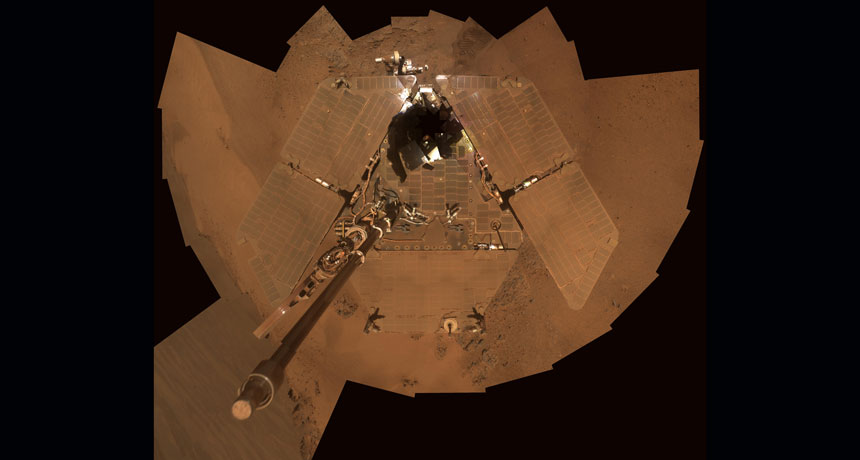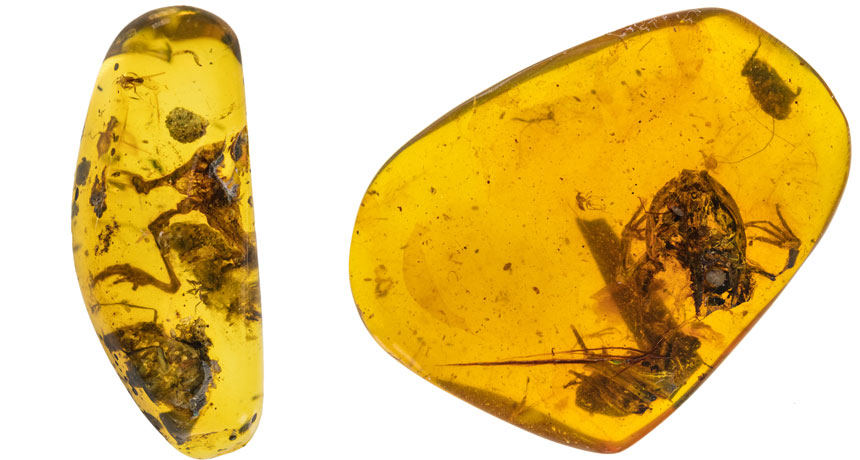The Mars rover Opportunity is sleeping, not dead, NASA says

The veteran Opportunity rover isn’t dead yet. Currently, the craft is in a deep sleep to ride out a massive Martian dust storm, NASA officials said in a briefing on June 13. The rover may wake itself up when the storm ends.
Opportunity is enveloped in a vast dust storm that grew from a small patch spotted on May 30 to cover a quarter of the planet by June 12 (SN Online: 6/11/18). Too little sunlight is reaching the rover’s solar panels, so Opportunity is in low-power mode — just barely enough to run the rover’s internal clock — until its batteries can charge again. The team hasn’t heard from Opportunity since June 10, and no transmissions are expected until the storm clears.
The Martian summer is just beginning, so the rover should stay warm enough to survive for a long time in this mode, said Opportunity’s project manager John Callas, a planetary scientist at NASA’s Jet Propulsion Laboratory in Pasadena, Calif.
“When the skies clear and the rover begins to power up, it should be able to communicate with us,” he said.
That’s not to say the team isn’t worried. Based on past storms, the wait could be anywhere from a few weeks to a few months.
“It’s like you have a loved one in a coma in the hospital,” Callas said. “You have the doctors telling you that, ‘OK, you just have to give it time and she’ll wake up,’… but if it’s your 97-year-old grandmother, you’re going to be very concerned. And so we are. By no means are we out of the woods here.”
Opportunity landed on Mars on January 25, 2004, and was supposed to last 90 Martian days. It has now spent 5,113 Martian days driving more than 45 kilometers.
